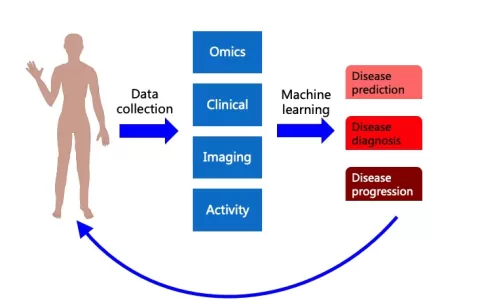Semaglutide benefits are increasingly recognized in the medical community, particularly for those battling diabetes and its associated complications. Known widely as Ozempic, this powerful medication not only aids in blood sugar control but has also been shown to alleviate symptoms of peripheral artery disease (PAD), a serious condition that can lead to severe complications like limb amputations. Recent studies reveal that semaglutide significantly improves quality of life, enabling patients to walk longer distances without experiencing calf cramping, a telltale sign of PAD. With diabetes treatments constantly evolving, the findings underscore semaglutide’s multifaceted role in managing diabetes complications and enhancing patient well-being. As research continues to uncover the full spectrum of semaglutide benefits, patients and healthcare providers alike are gaining a new ally in the fight against the debilitating effects of diabetes.
The emerging advantages of semaglutide, also referred to as Ozempic, mark a significant advancement in diabetes management. This innovative therapy is gaining attention for its ability to tackle serious health issues that arise from diabetes, such as peripheral artery disease. By alleviating PAD symptoms, semaglutide not only offers hope for improved mobility but also helps mitigate the risks associated with diabetes complications. Furthermore, the dual action of controlling blood sugar levels while promoting a better quality of life highlights the importance of effective diabetes treatments. As more patients seek newer therapeutic options, semaglutide’s role in combating diabetes and its complications becomes increasingly vital.
Understanding Semaglutide: The Benefits Beyond Weight Loss
Semaglutide, commonly known by its brand name Ozempic, has gained significant attention as an effective treatment for diabetes management. Recent studies highlight the enhanced benefits of this medication beyond simple weight loss. Specifically, semaglutide not only helps regulate blood sugar levels but has also been shown to alleviate symptoms of serious diabetes complications, including peripheral artery disease (PAD). With its ability to support overall vascular health, more healthcare providers are advocating for its use in comprehensive diabetes treatments.
The latest clinical trials indicate that patients taking semaglutide experienced improved walking distance and a reduction in PAD symptoms, such as painful cramping in the calves. This development is particularly significant as PAD can lead to severe health conditions, including limb amputation. By addressing both blood sugar levels and vascular health, semaglutide emerges as a multifaceted treatment approach, providing both diabetic patients and healthcare professionals with renewed hope.
The Growing Concern of Peripheral Artery Disease (PAD)
Peripheral artery disease is a critical yet often overlooked complication of diabetes that can severely impact quality of life. As arteries narrow, blood flow to the extremities decreased, resulting in symptoms like numbness, tingling, and painful cramping, which complicate daily activities. Approximately 10 to 20% of individuals with diabetes are affected by PAD, highlighting the urgent need for effective treatments that can alleviate symptoms and improve patients’ mobility.
Without timely intervention, PAD can progress to more severe outcomes, including chronic wounds and potential amputation. Current diabetes treatments have failed to demonstrate significant improvements in these outcomes, stressing the necessity for advancements in therapies. Semaglutide appears to fill this gap by not only regulating diabetes but also tackling PAD symptoms directly, presenting itself as a critical option in managing diabetes-related complications.
How Semaglutide Impacts Quality of Life in Diabetic Patients
Quality of life for individuals with diabetes can be drastically affected by complications such as peripheral artery disease. Improved mobility is not just about physical activity; it’s about independence and overall well-being. Clinical studies have shown that semaglutide treatment has significantly enhanced the ability of patients to walk longer distances without experiencing PAD-related pain, which can lead to a better quality of life and increased physical activity.
Moreover, the psychological benefits of improved mobility cannot be overstated. Patients report feeling more confident and capable as they engage more in their daily lives without the debilitating effects of their symptoms. This holistic improvement in their condition underlines the transformative potential of semaglutide, marking it as a significant advancement in both diabetes management and the treatment of peripheral artery disease.
The Mechanism of Action: How Semaglutide Works
Semaglutide belongs to the class of medications known as GLP-1 receptor agonists, which mimic the effects of incretin hormones to enhance insulin secretion and suppress glucagon release. This dual action helps in achieving better glucose control while also promoting weight loss. However, recent findings indicate that semaglutide’s effects extend beyond glucose management, particularly in reducing symptoms associated with peripheral artery disease.
The precise mechanism through which semaglutide alleviates PAD symptoms is still under investigation. Still, researchers suggest that the medication helps improve endothelial function and may enhance blood flow. These effects are crucial because they facilitate better perfusion to the lower limbs, countering some of the vascular issues that contribute to PAD symptoms, making semaglutide a revolutionary treatment for individuals grappling with diabetes and its complications.
Clinical Trials: Evidence Supporting Semaglutide’s Efficacy
The clinical trial named STRIDE provided groundbreaking evidence for the efficacy of semaglutide in managing peripheral artery disease symptoms in patients with diabetes. In this study, participants assigned to receive semaglutide showed notable improvements in their ability to walk without pain, compared to the placebo group. The implications of these findings are profound, suggesting that semaglutide could prevent further progression of PAD and improve the overall health of diabetic patients.
Moreover, these clinical trials offer a promising path forward for integrating semaglutide into treatment protocols for diabetes. With its dual action in managing blood sugar levels and alleviating PAD symptoms, semaglutide may redefine standard diabetes treatments. As more data emerges, healthcare providers may find it essential to include semaglutide as a cornerstone therapy, especially for patients at risk of serious diabetes complications.
Potential Side Effects of Semaglutide
Like all medications, semaglutide is associated with potential side effects, which can vary from mild to severe. Common side effects may include gastrointestinal issues such as nausea, vomiting, and diarrhea. These side effects are generally managed with dose adjustments and can diminish over time as the body acclimates to the medication. It’s crucial for patients considering semaglutide to be informed about these potential effects and to discuss them thoroughly with their healthcare provider.
In rare cases, patients may experience more serious effects, including panreatitis or allergic reactions. Patients are encouraged to report any unusual symptoms promptly. Overall, while viable concerns exist regarding semaglutide’s safety profile, the benefits—particularly in reducing the severity of diabetes complications such as PAD—have prompted significant interest in its use as a standard treatment option.
The Importance of Lifestyle Changes Along with Semaglutide
While semaglutide offers profound benefits in managing diabetes and peripheral artery disease, it’s essential to emphasize that it works best in conjunction with lifestyle modifications. Encouraging patients to adopt healthier dietary habits and increase physical activity can significantly enhance the overall effectiveness of the treatment. Patients should be supported in making gradual changes, such as incorporating balanced meals and regular exercise into their daily routine.
These lifestyle changes not only complement the pharmacological aspects of semaglutide but also empower patients to take control of their health. Implementing positive changes can further help minimize diabetes complications, including PAD, while promoting overall well-being. Therefore, healthcare providers should prioritize a holistic approach that includes medication, lifestyle adjustments, and patient education.
Exploring Future Research on Semaglutide
As the research on semaglutide continues to evolve, future studies may delve deeper into its benefits beyond diabetes management. Understanding the long-term implications of using semaglutide on PAD and other diabetes complications could pave the way for new treatment guidelines. There’s a growing interest in how semaglutide can influence cardiovascular health, kidney function, and overall metabolic syndrome, thus broadening its therapeutic applications.
Moreover, ongoing trials may explore how variations in population demographics, such as age, race, and coexisting medical conditions, can affect the outcomes of semaglutide treatment. This data will be pivotal in ensuring that healthcare practices evolve in a way that embraces personalized medicine, offering tailored treatments that meet the specific needs of diverse patient populations.
Patient Testimonials: Real-Life Impact of Semaglutide
Real-life testimonials from patients who have taken semaglutide speak volumes about its effectiveness and transformative impact on their lives. Many report significant improvements in their ability to manage diabetes, experience less discomfort due to PAD symptoms, and notice a marked boost in their quality of life. These personal accounts reinforce the clinical findings that suggest semaglutide is more than a weight-loss drug; it genuinely alters the trajectory of diabetes management.
Patients are increasingly sharing stories about how semaglutide has allowed them to engage in activities they had long avoided due to debilitating symptoms. From enjoying family outings to taking part in physical activities, the medication has redefined what is possible for many individuals battling diabetes and its associated complications, showcasing the drug’s potential as a lifeline for those at risk.
Frequently Asked Questions
What are the Semaglutide benefits for managing peripheral artery disease (PAD) symptoms in diabetes patients?
Semaglutide, commonly known as Ozempic, offers significant benefits for diabetes patients experiencing peripheral artery disease (PAD) symptoms. It has been shown to reduce calf cramping, improve the distance patients can walk without pain, and enhance overall quality of life. The clinical trial results indicate that patients taking semaglutide showed better ankle-brachial indices, indicating improved blood flow to the lower limbs.
How does Semaglutide help reduce diabetes complications such as PAD?
Semaglutide, or Ozempic, plays a vital role in reducing diabetes complications like peripheral artery disease (PAD). Its therapeutic effects extend beyond blood sugar control, positively impacting circulation in diabetic patients. Studies have shown that semaglutide significantly alleviates PAD symptoms, allowing individuals to walk further without discomfort and potentially preventing complications associated with low blood flow.
Is Semaglutide effective for patients with diabetes struggling with weight loss and PAD symptoms?
Yes, Semaglutide has proven effective for patients with diabetes who face challenges with weight loss and peripheral artery disease (PAD) symptoms. While weight loss is a known benefit of the medication, research indicates its positive effects on PAD symptoms are independent of weight. Many patients report improved walking distance and a reduction in calf cramping while on semaglutide.
What is the relationship between Semaglutide and diabetes treatments aimed at preventing PAD?
Semaglutide is an innovative diabetes treatment that offers multifaceted advantages, including the prevention of complications associated with peripheral artery disease (PAD). As a GLP-1 receptor agonist, it effectively lowers blood glucose levels while also enhancing blood circulation. This dual benefit makes semaglutide a promising option for diabetes patients at risk of developing PAD.
Can Semaglutide therapy improve quality of life for those with diabetes and PAD?
Absolutely! Research has shown that Semaglutide, or Ozempic, significantly improves the quality of life for diabetes patients suffering from peripheral artery disease (PAD). Participants in trials have reported not only better management of PAD symptoms but also an enhanced ability to engage in physical activities, reducing the limitations caused by calf cramping and discomfort.
What sets Semaglutide apart from other diabetes treatments in terms of PAD benefits?
Semaglutide distinguishes itself from other diabetes treatments by effectively addressing symptoms of peripheral artery disease (PAD) alongside its primary role in managing blood sugar levels. While many diabetes medications focus solely on glucose control, semaglutide has demonstrated tangible improvements in PAD outcomes, making it a comprehensive therapy for patients at risk of severe vascular complications.
| Key Findings | Details |
|---|---|
| Semaglutide’s Role | Semaglutide, also known as Ozempic, reduces symptoms of peripheral artery disease (PAD) in diabetic patients. |
| Improved Quality of Life | Participants experienced increased walking distances and reduced calf cramping. |
| Study Details | The clinical trial, called STRIDE, involved 792 participants with diabetes and mild to moderate PAD symptoms. |
| New Treatment Insights | Semaglutide improves PAD symptoms independent of weight loss, targeting the disease directly. |
| Doctor’s Perspective | Experts emphasize that semaglutide offers multiple benefits beyond weight loss for diabetes management. |
Summary
Semaglutide benefits diabetic patients by reducing symptoms related to peripheral artery disease, offering hope for patients at risk of serious complications like limb amputations. The recent findings from the STRIDE trial indicate that semaglutide not only enhances quality of life but also significantly improves mobility without depending solely on weight loss. This establishes semaglutide as a multi-faceted treatment option in the management of diabetes, highlighting its therapeutic potential beyond glycemic control.
The content provided on this blog (e.g., symptom descriptions, health tips, or general advice) is for informational purposes only and is not a substitute for professional medical advice, diagnosis, or treatment. Always seek the guidance of your physician or other qualified healthcare provider with any questions you may have regarding a medical condition. Never disregard professional medical advice or delay seeking it because of something you have read on this website. If you believe you may have a medical emergency, call your doctor or emergency services immediately. Reliance on any information provided by this blog is solely at your own risk.






